Last Updated on July 30, 2021
One of the lone bright spots about the new take on the classic story of Hansel and Gretel — now flipped as GRETEL & HANSEL — is that it understands that a story about two children about to be eaten/murdered/God knows what by a witch in a cottage shouldn't be anything less than deranged as all hell. If the feast you're coming for is one that can certainly look and can sometimes feel as suitably nightmarish, then prepare to dig in, but if you don't want such a treat at the expense of storytelling, writing, and all the other requirements of good filmmaking, then perhaps dig into a different tale.
Before meeting the titular young stars, we’re shown the tale of a girl who, years before, was cured of an illness by a witch – one that looks gnarly enough to be ripped straight from the cover of a death metal album, and in no way should be trusted with holding a child. Once cured, the girl is given magic powers and becomes a little devil herself and is thus banished into the woods. It’s in these woods and with these minimalist and nightmarish visuals that director Osgood Perkins wastes no time putting his own twisted spin on the fairy tale canon, crafting some enrapturing, off-putting shots. A grim narration and these visuals plop you straight into what quickly shapes up to be a fairy tale from hell, as we don’t know what happens to the young girl, only she stays in the woods luring in children with her evil magic business.
We're then introduced to Gretel (Sophia Lillis), who we meet as she ponders to herself in the manner of someone far older and wiser than she actually is. As the title suggests, this story is certainly more centered on Gretel than her younger brother Hansel, who this go-around means to just tag along, moaning on about wanting cake. After Gretel refuses a job at a house wherein the male owner – caked in clownish makeup – asks her about her virginity (this is done so unsettlingly to warrant bumping the PG-13 to an R-rating), her mom has no choice but to drive her and her brother out of the house with an ax, sending them into the forest.
Again, from the blue hue of the children’s depressing home to the vibrancy of the forest, Perkins has a knack for crafting arresting visuals that can draw you into any scene. The problem is that as much as this establishes an eerie, ominous tone, it’s when you start to look inside that the lack of anything substantial becomes clear. Take for instance an early scene, wherein the children, after stumbling into a house, are saved from a screeching, pale, balding creature by a dashing Hunter (Charles Babalola). It looks great, the walls basked in the flame of the candles, but what the hell is this creature? Why was it in the seemingly in the same house as the huntsman? We’re then brought back into the home where the events are not discussed, and everyone seems rather chill about it all. The logic escapes in the filmmakers' constant goal of making everything look as seedy and dark as possible, with following character interactions devoid of any engagement or personality, as if to adopt an angry high schooler's rationale of "Yeah, man, that was f**ked, but so is the world."

Showing the same colors as he did in his 2015 outing – THE BLACKCOAT’S DAUGHTER – Perkins resigns to the thinking that the heaviness and bleakness of the mood and atmosphere need to be reflected exactly in his actors and pacing. Everything looks suitably haunting as the children venture into the woods, but the events, pacing and acting are treated with their own brand of downtrodden bleakness so to just come off as pretentious. So much so that when there are moments that may perhaps shake things up, they come off ham-fisted and almost unintentionally funny. One sequence finds the children, near-starving, eating strange mushrooms and proceeding to trip balls and giggle at one another. It’s bizarre enough to switch things up but jaw-dropping in its tone-deafness that it begs why even the strangest, freakiest scenes can't help but feel dull.
When we finally do get to the fabled house, and the children are brought in by the witch within to feast, things don’t get much better. That is in no way the fault of actress Alice Krige, who gaunt and cloaked in black, always has a big, menacing smile that’s both horrifying and oddly welcoming. I myself would probably stop by for a bite to eat if I found myself hungry in the woods – which is a testament to how great she is. Her house looks suitably sinister, with orange window glass sending rays of light to give some deceptive warmth to the darkness. What’s the shame is that when we step inside the house the story seems to come to a screeching halt and logic thrown out the beautiful windows.
Despite something obviously evil going on, and Gretel even a bit privy to it, there’s hardly a moment where she considers maybe, just, leaving with Hansel. Instead, they stay, doing odd jobs around the house despite them previously being on their way to a much more normal village at The Hunter’s urging. Even as Gretel works her way through nightmares and visions featuring bloody children, the most she does is make a half-assed suggestion to leave, all before remaining expressionless and sticking around to chill at the creepy house. It’s as the story progresses that Perkins’ desire to keep everything so vacant and dreary that it comes off less like a spiral into something nightmarish and more like one into mind-numbing repetition.
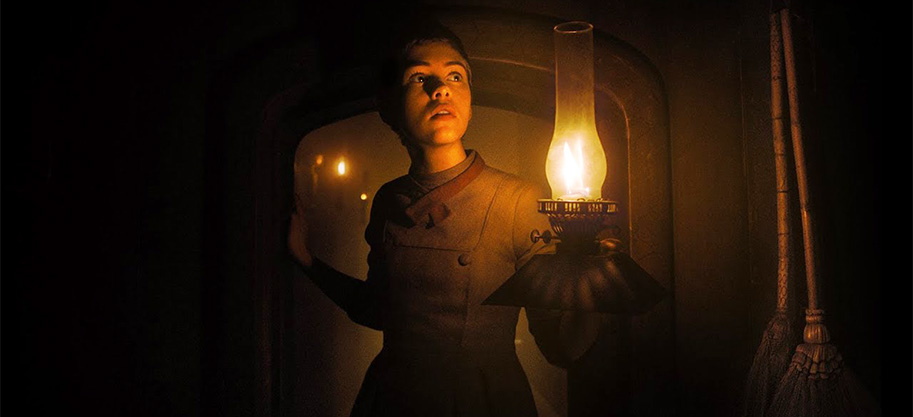
A lot of that falls onto the script by Rob Hayes, who writes all the characters as if they’re all trying to be the smartest person in the room at any moment, speaking robotically and with plenty of figures of speech, often about how grim the world is. What these three characters say to each other all begin to sound the same and mushed together. There's no development or personality to who and what we're seeing, and rather just a series of ominous ramblings against a horror background that can start to feel plain after awhile. With Krige’s performance standing apart, Lillis is trapped with dialogue written by someone who must really love Rorschach from WATCHMEN and with a director who keeps her character as emotionally vacant and wooden as possible, mistaking moroseness for depth. The young star is talented enough to shine through at times with curiosity and fear, but she gets stuck in scenes where she has little to do but stare blankly and mumble aimless dialogue. Even when major developments with her happen, like Gretel being coyed by the witch into practicing some dark arts by rubbing what looks like bacon grease on her hands and moving a stick with her mind, it feels unimportant, random and indistinguishable from any other moment. Like Perkins’ BLACKCOAT, it’s all attempts at atmospheric dread but with no rhythm or substance to make it engaging to watch.
I do admire the approach of taking a fairy tale back to its terrifying, f**ked-up roots, but Hayes on the script and Perkins behind the camera lack the tendencies to make anything worthwhile beyond a dark tone and pretty visuals. Audiences will be plunged into a world that has the looks, but once inside this tale there’s nothing to grab hold of on an emotional, intellectual or terrifying level. For some hardcore horror fans that may all be enough, with plenty of grim visuals to at least masquerade as something daring. But whether in the woods or in a cottage, necessities for engaging storytelling and character-building are devoured by misguided bleakness. That’s especially odd for a movie that seemingly aims to be inspiring by the end, landing on themes about a young girl finding her gifts. But despite the good intentions, there’s a lack of a spark of madness – or really a spark of anything – that makes this dark vision worth digging into.


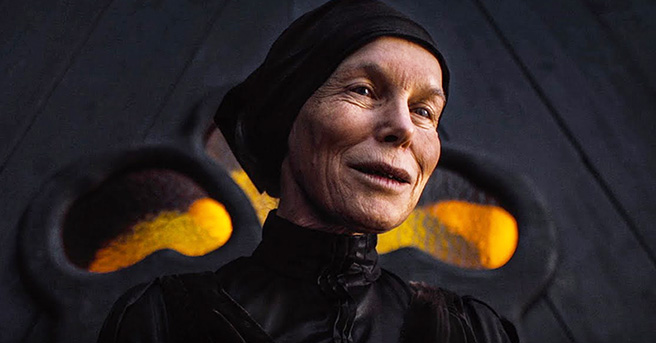




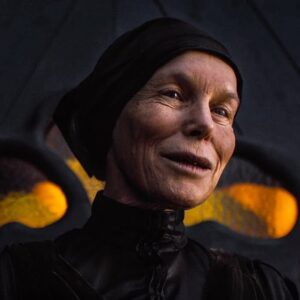


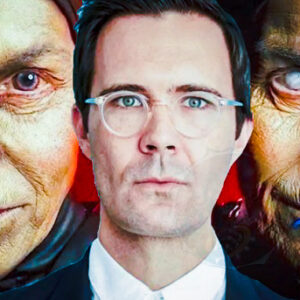

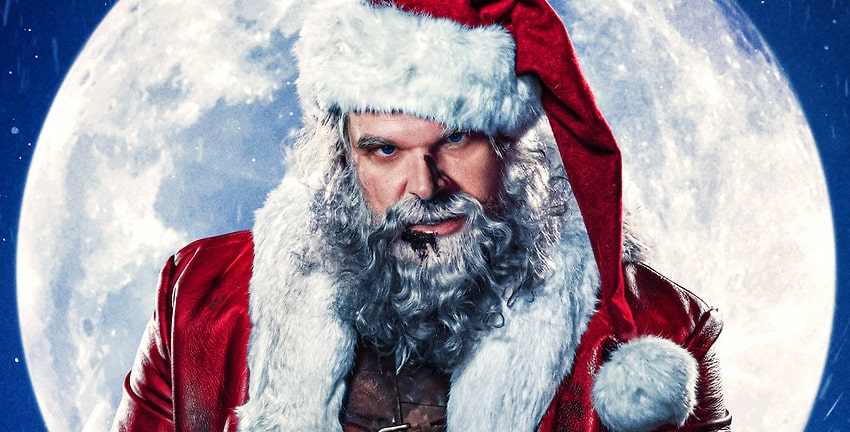

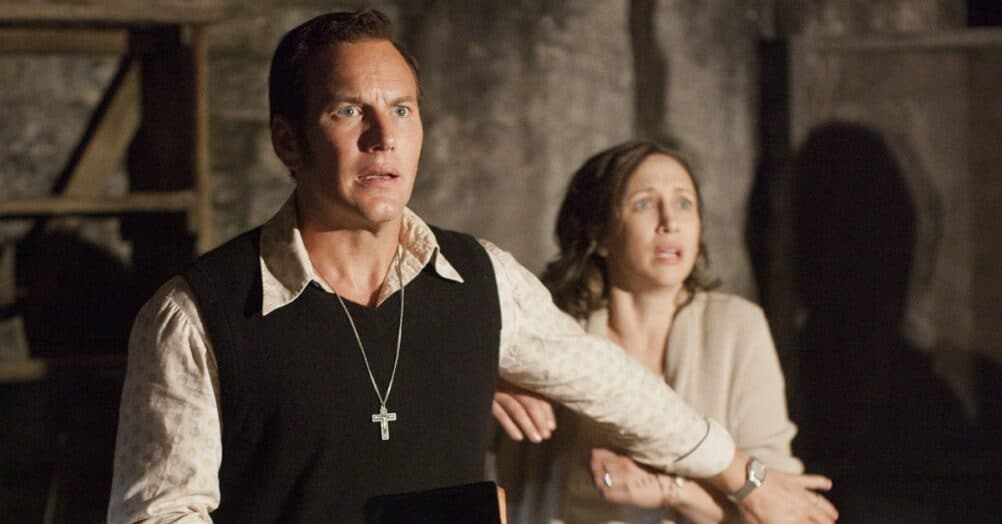






Follow the JOBLO MOVIE NETWORK
Follow us on YOUTUBE
Follow ARROW IN THE HEAD
Follow AITH on YOUTUBE